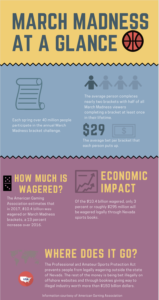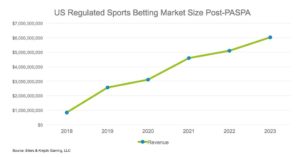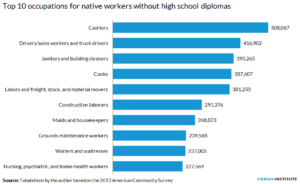After more than two decades, the Supreme Court has agreed to hear the repeal of the Professional and Amateur Sports Protection Act. PASPA, a federal law enacted in 1992 outlaws single-game sports wagering outside of Nevada. While opening arguments will commence in early December, a decision will likely not be reached until early 2018. Still, this is the furthest that the argument for a modernized and regulated sports betting market has reached. A decision in favor of repealing the law, which the state of New Jersey has claimed as unconstitutional can unlock a market worth several billion dollars.
While the Supreme Court gears up to hear opening arguments in this case, leagues across the world have begin to prepare for what is seen as the inevitable. Through partnerships, changes in stances, and sponsorships, leagues have been preparing for quite some time. In the two decades-plus since PASPA was first enacted, the world of sports has greatly changed.
PASPA was enacted in a way to protect the sanctity of the game. Fears of point shaving and match fixing forced the public and Congress to accept a bill that would seemingly fix such problems. However, in the years since daily fantasy leagues have taken their place in American society, sports leagues have taken sponsorships from casinos, and most importantly have led way to an offshore illegal market worth $150 billion dollars.
Take for example the über popular NCAA March Madness tournament. The annual affair draws fans from across the United States to fill out tournament brackets in which they predict who will move on. In recent years more and more fans have turned towards wagering their picks online.
The American Gaming Association estimates that roughly 40 million people fill out 70 million brackets with the average bet per bracket hanging around $29. This year the AGA estimated that Americans wagered $10.4 billion dollars on March Madness. Of the $10.4 billion wagered, only 3 percent or roughly $295 million will have been done so legally through Nevada sportsbooks.
What’s important to note is that while the United States Supreme Court has agreed to hear the repeal of PASPA, it does not come on the heels of the issue of the unfounded fears against match fixing or the billions of dollars being pumped into organized crime, but rather if the law violated the 10th amendment and the sovereignty of states when it was first ushered in. Still, the result of this decision can lead way to ending such widespread problems.
SportRadar a company that deals with data is partnered with three of the four biggest leagues in the United States. The company which provides real-time statistics for the NFL, NBA, and NHL. In addition to providing statistics used by broadcasters and bookies worldwide, SportRadar also monitors and reports on unusual betting trends. The company is also the parent company of BetRadar, a major figure in the gambling industry.
Likewise, the MLB which represents the fourth biggest league in the United States has a partnership with Genius Sports which acts in the same manner as SportRadar. Its executives met with sportsbook operators in September to gain a better understanding of how the industry operates.
These partnerships with data companies provide a stark shift in stance compared to just one decade earlier when representatives filed a letter dismissing the idea of monitoring books and the data that makes them up.
Outside of partnering with outside agencies, the NFL and NHL have both elected to move and create franchises in Las Vegas respectively. The Oakland Raiders of the NFL are set to arrive in 2019, while the Las Vegas Golden Knights have opened play this past week.
Attendees of Golden Knights home games will be able to readily bet within the confines of the T-Mobile Arena. The NHL had the opportunity to file a prohibition preventing sports betting from occurring as the game happens, however, elected not to.
The NFL in recent years has held games in London, England where sports betting is regulated and legal. Outside of moving the Raiders to Las Vegas, the NFL has also eyed creating a franchise in the country. The ability to bet in-game without the result being compromised is a look at the potential for such a feature in the United States.
NBA commissioner Adam Silver wrote in 2014 in the New York Times, “Times have changed since PASPA was enacted.” “I believe that sports betting should be brought out of the underground and into the sunlight where it can be appropriately monitored and regulated.”
Should PASPA be repealed, over a dozen states have already filed legislation this year that would permit wagering on sports in some way. The AGA estimates that a legal sports betting market would provide over 150,000 in jobs.
Steve Doty, Director of Media Relations, says that the AGA is committed to turning over PASPA and leading the conversation. “AGA looks forward to leading the conversation in states across the country to educate local lawmakers on sports betting.”
Company Eilers & Krejcik Gaming has taken a conservative approach to estimating the potential for a legal and regulated betting environment. They estimate in a base case that by 2023, if 32 states were to legalize sports betting in some form the market will be worth approximately $6.03 billion dollars in annual revenue.
If every state were to legalize gambling, including online wagering, the number expands to $16 billion dollars which comes from $245 billion taken in.
All of this comes on the heels of a Washington Post poll published in September which sees more than half of Americans supporting a legal and regulative sports betting environment. 55-percent approve of such an environment which serves as a drastic shift from nearly 25 years ago when PASPA was first enacted and 56-percent of Americans disproved of legalized sports gambling.
Recent U.S. gambling legalization: A case study of lotteries – ScienceDirect
U.S. Sports Betting: A Sector On The Cusp Of Major Change | GamblingCompliance
Gambling – Where does sports betting legalization in the U.S. stand right now?
Sports Betting Ban Has ‘Perverse Effect,’ Says Casino Group – Poker News
NFL’s presence in UK shows how gambling can be done
March Madness Betting to Top $10 Billion | AGA






